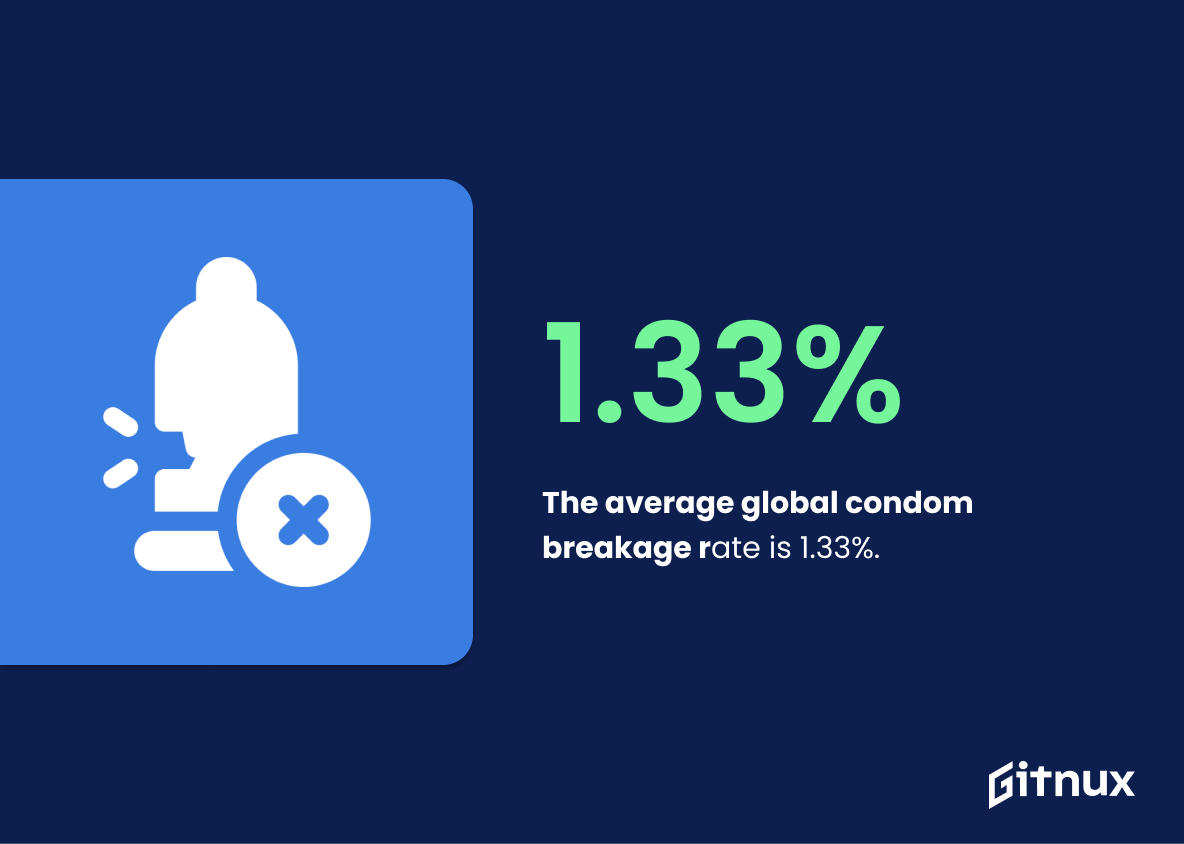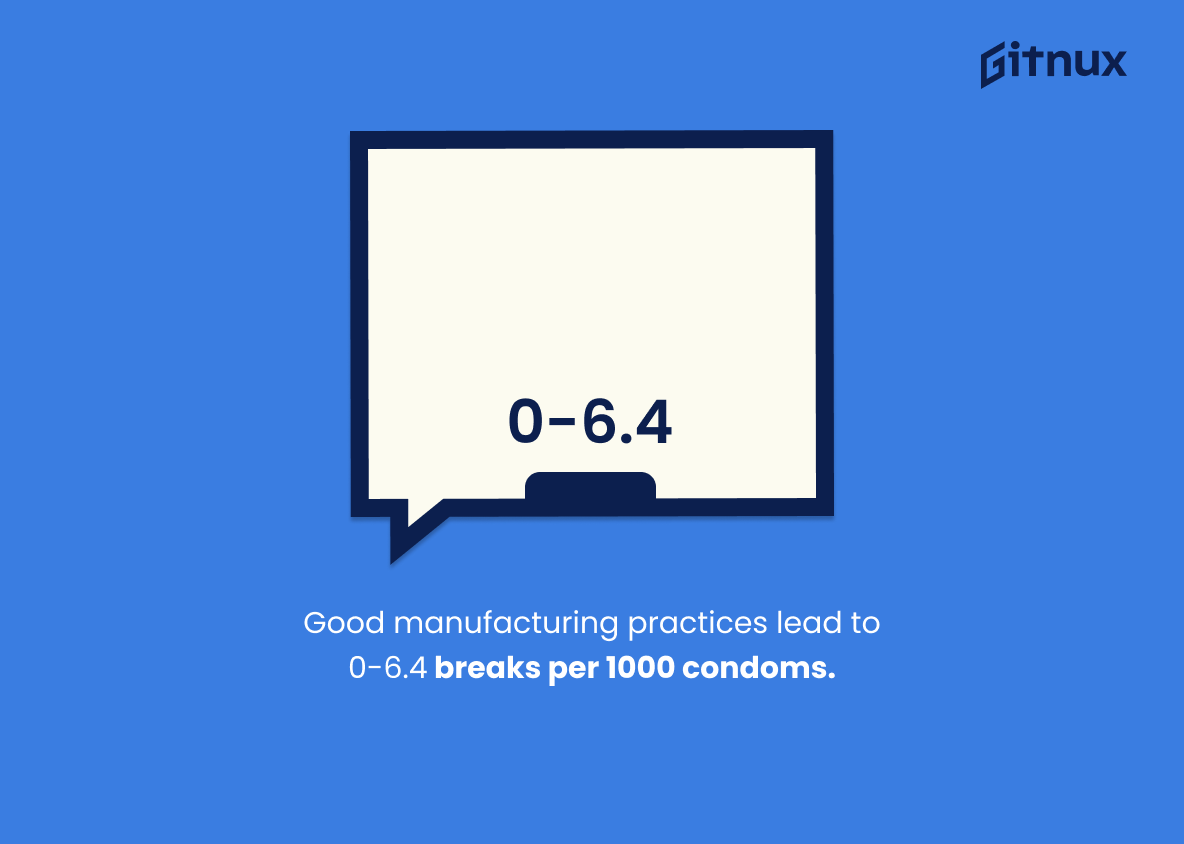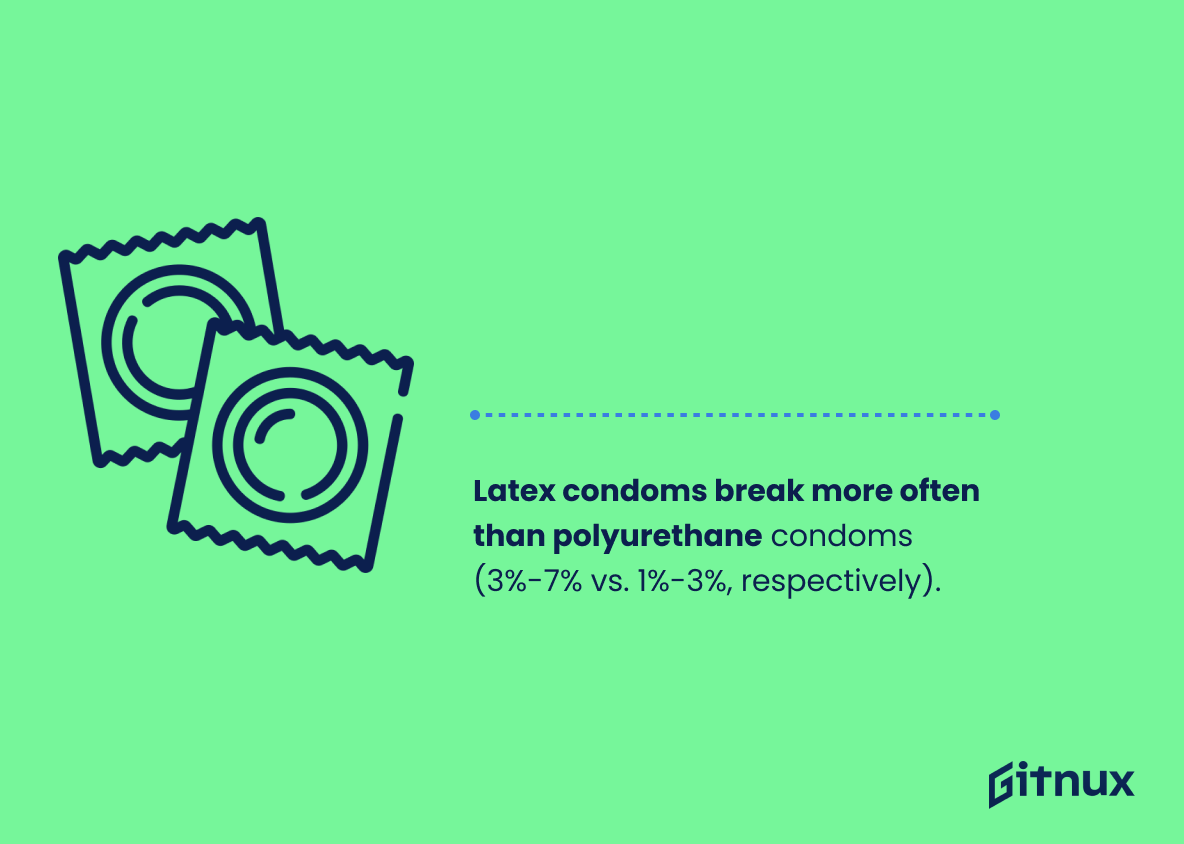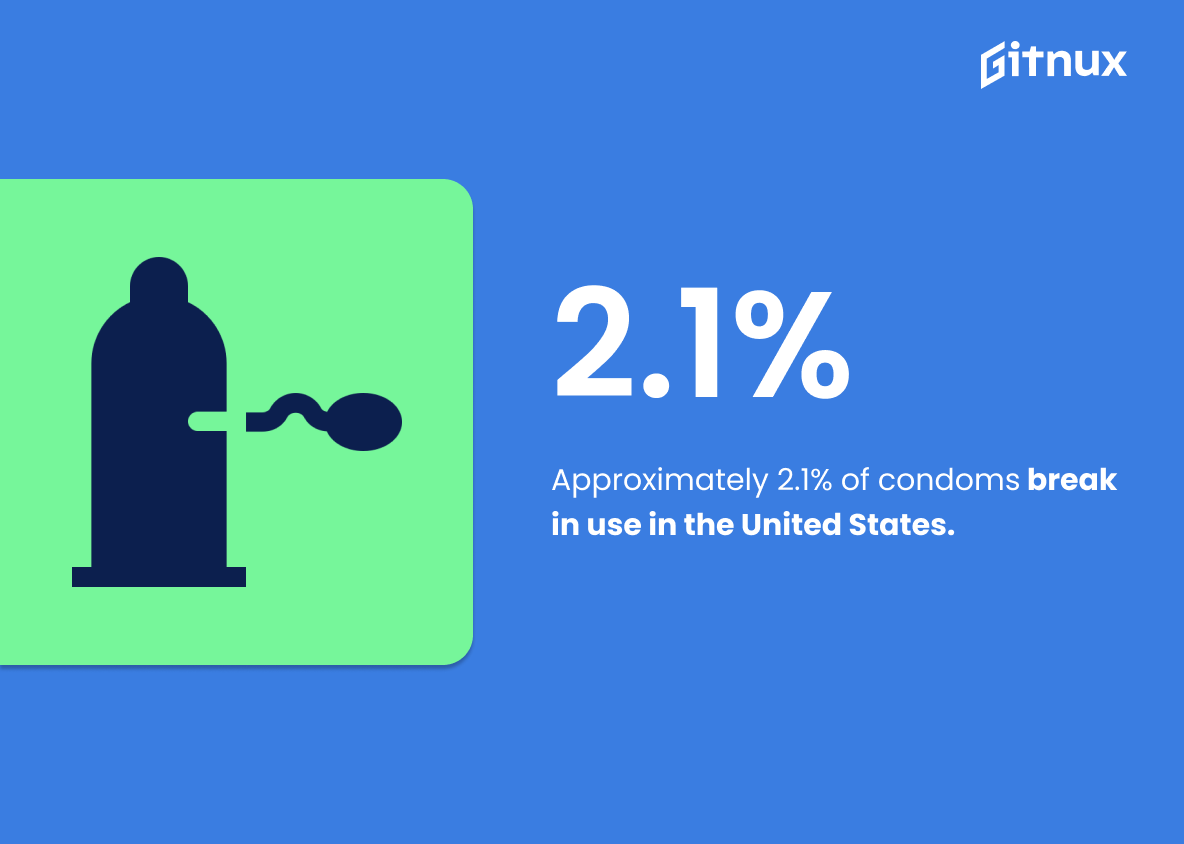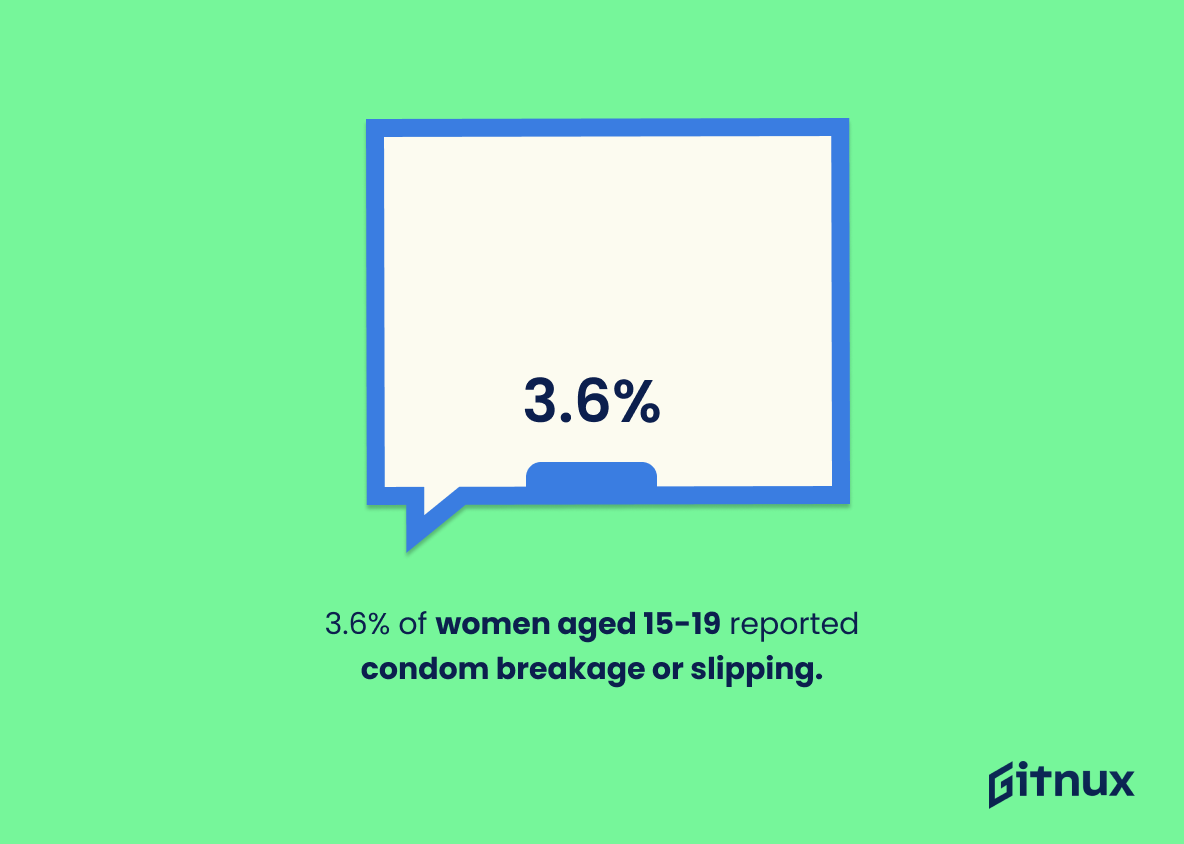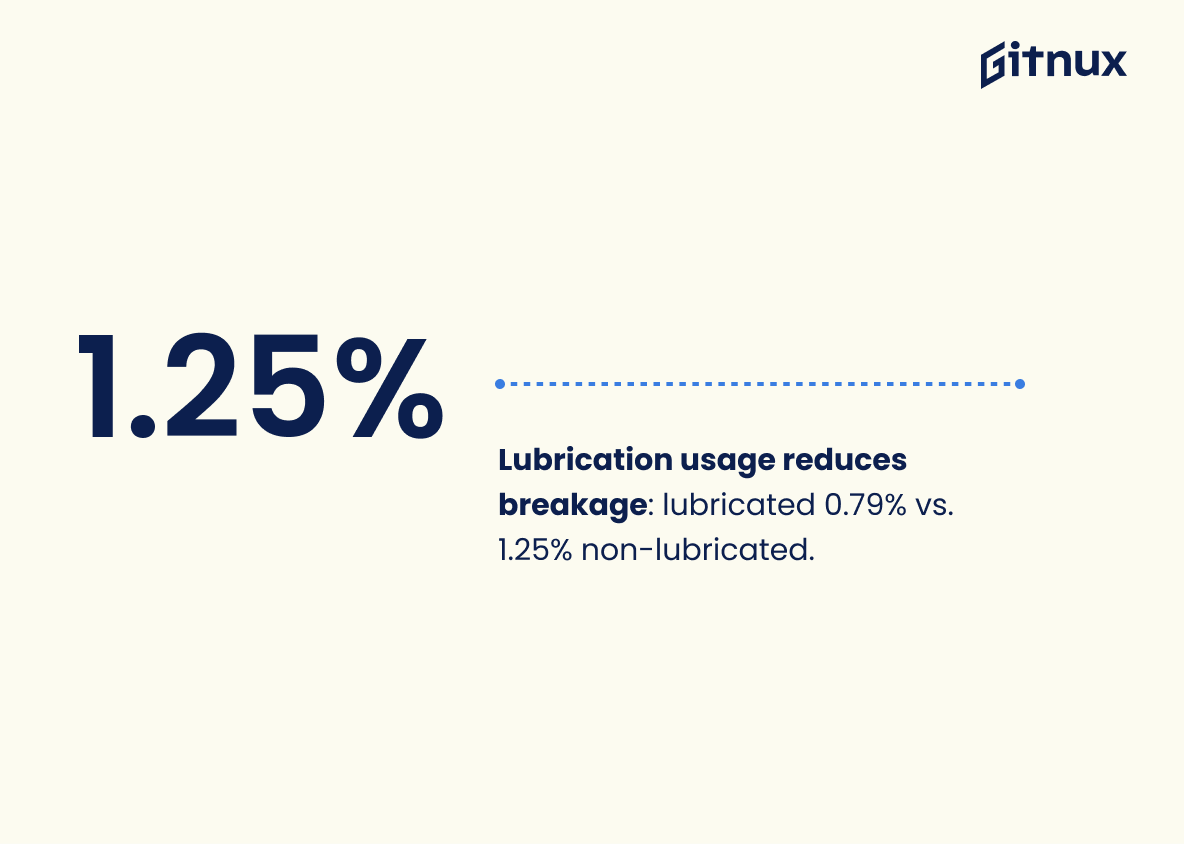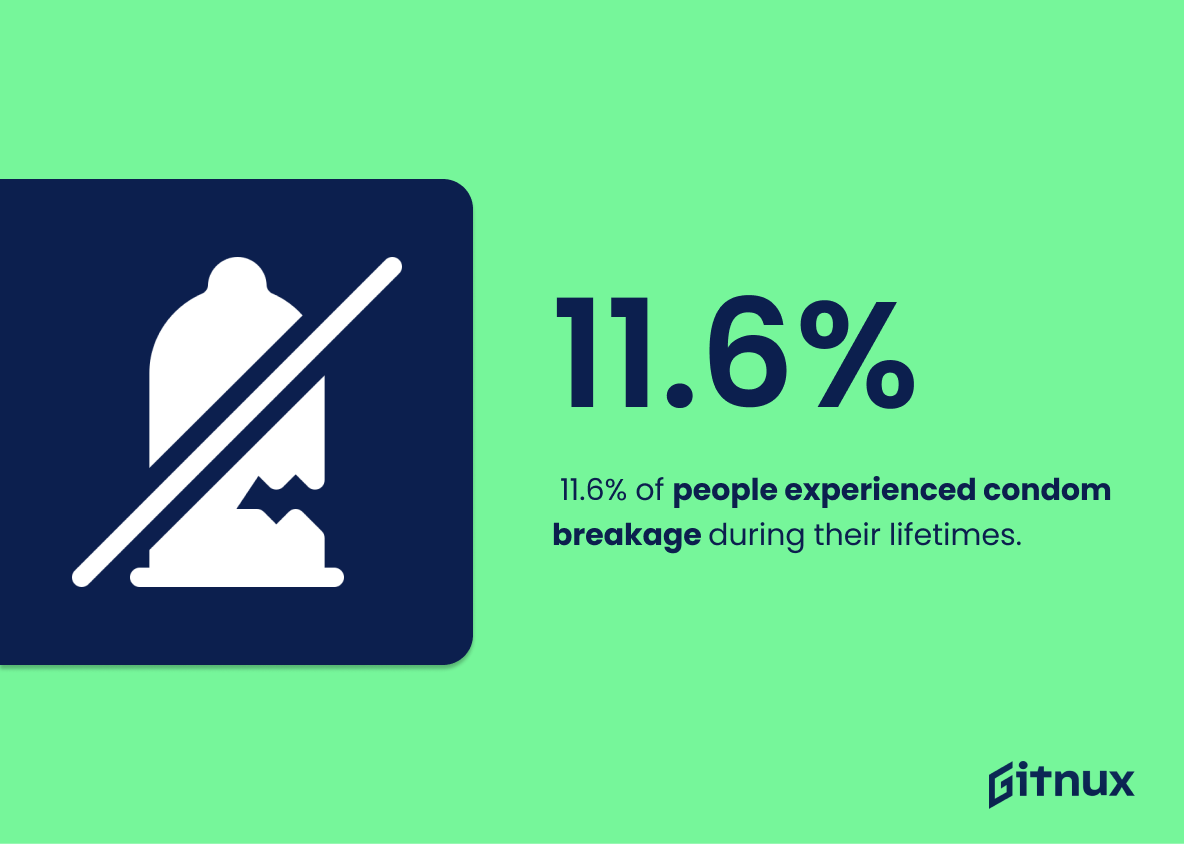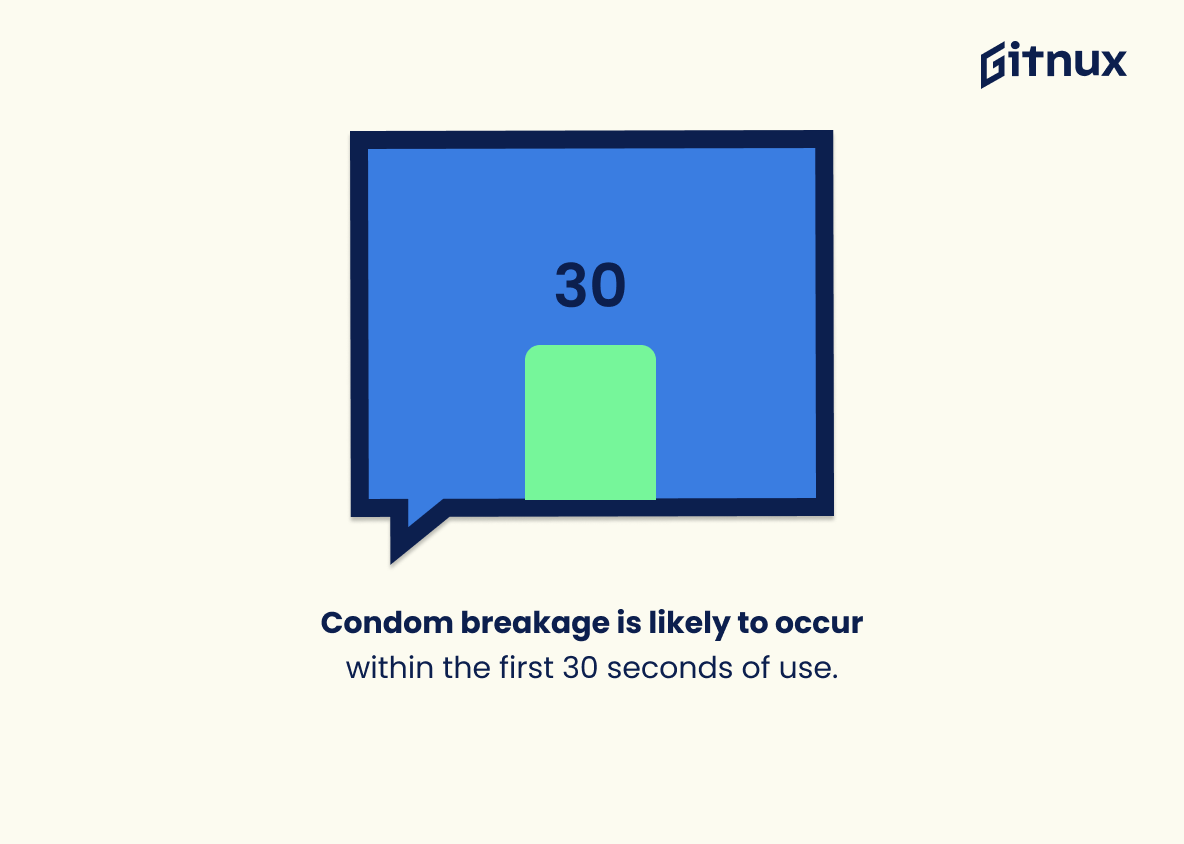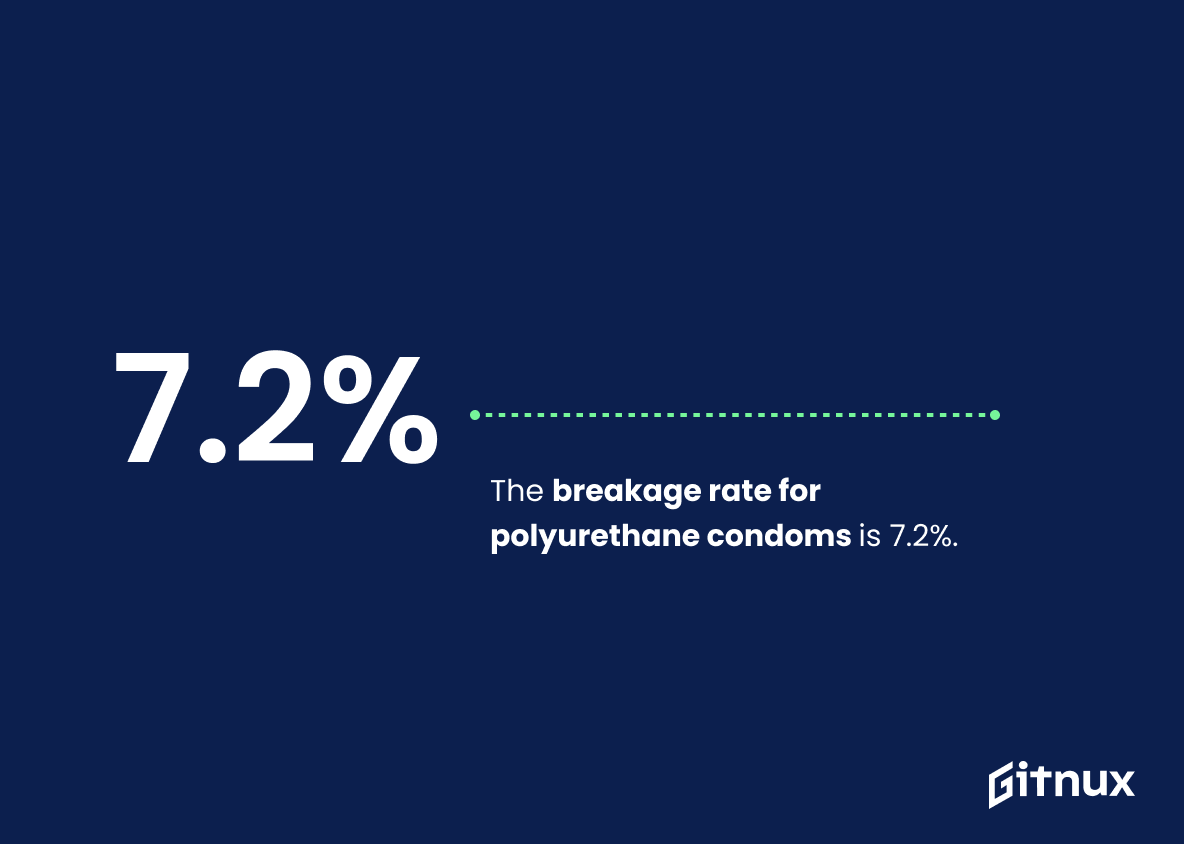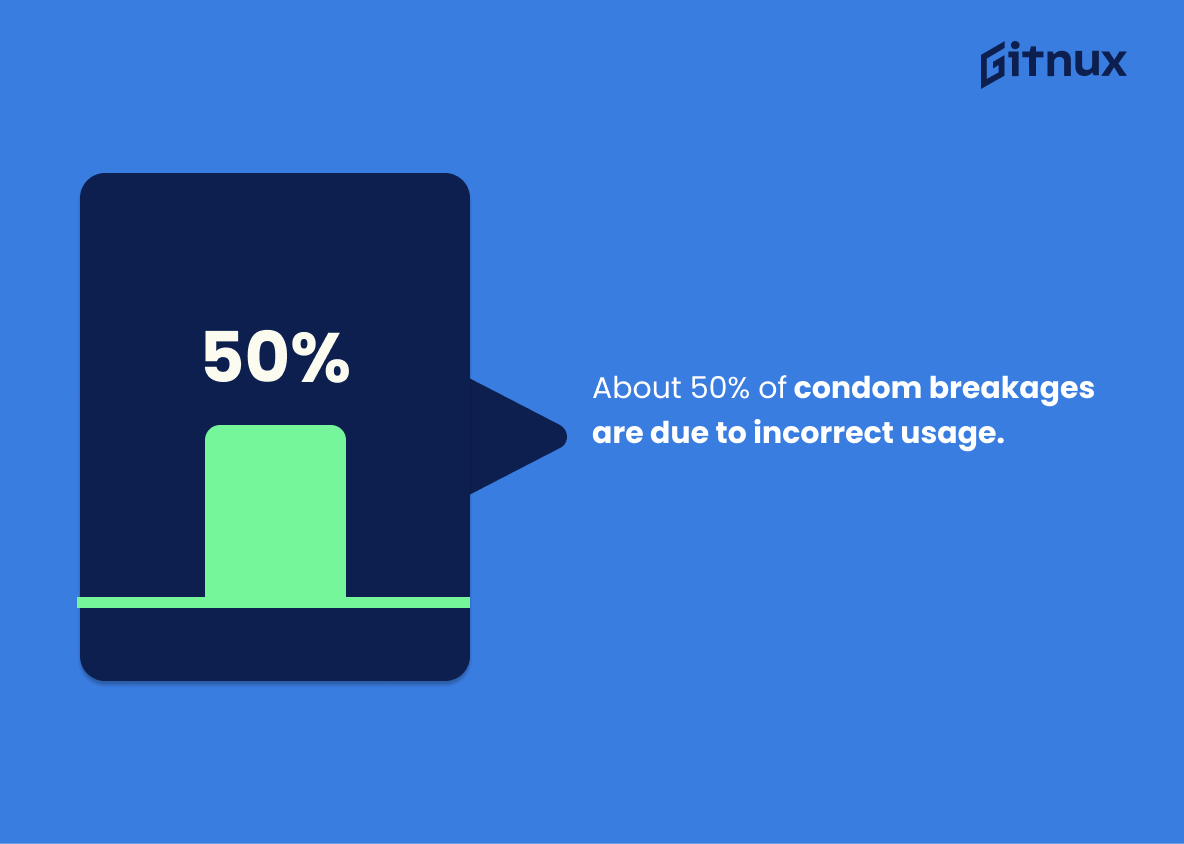Condoms are an important form of contraception and protection against sexually transmitted infections (STIs). However, it is essential to understand the effectiveness of condoms in order to ensure that they are used correctly. This blog post will explore condom breakage statistics from various sources, including studies conducted on college students, commercial sex workers, and couples who use condoms frequently. We’ll look at the average global condom breakage rate as well as rates for different types of condoms such as latex or polyurethane. Additionally, we’ll discuss factors that can increase the risk of a broken condom such as incorrect usage or lack of lubrication. Finally, we’ll examine how effective 97% percent efficacy rate when using them properly really is in practice by looking at other relevant data points about breaking and leaking condoms during sexual intercourse.
This statistic is of paramount importance when discussing condoms breaking statistics, as it serves to highlight the effectiveness of condoms when used correctly. It is a reminder that, despite the occasional breakage, condoms remain a reliable form of contraception and are an important tool in preventing unwanted pregnancies.
On average, 2% of condoms break during use.
This statistic is a crucial piece of information when it comes to condoms breaking statistics, as it provides an insight into the reliability of condoms. It is important to know the likelihood of a condom breaking during use, as it can have serious implications for sexual health and safety. Knowing this statistic can help people make informed decisions about their contraceptive choices.
Condoms Breaking Statistics Overview
The average global condom breakage rate is 1.33%.
This statistic is a crucial indicator of the reliability of condoms as a form of contraception. It provides a clear indication of how often condoms fail to provide the protection they are intended to, and can be used to inform decisions about which brands and types of condoms are most reliable. Furthermore, it can be used to inform public health campaigns and initiatives, helping to ensure that people are aware of the risks associated with using condoms and how to reduce them.
Good manufacturing practices lead to 0-6.4 breaks per 1000 condoms.
The statistic that ‘Good manufacturing practices lead to 0-6.4 breaks per 1000 condoms’ is a testament to the importance of quality control in the production of condoms. It highlights the fact that when manufacturers adhere to the highest standards, the risk of condoms breaking is drastically reduced. This is an invaluable piece of information for anyone looking to make an informed decision about the safety and reliability of condoms.
Latex condoms break more often compared to polyurethane condoms (3%-7% vs. 1%-3%, respectively).
This statistic is a stark reminder of the importance of using the right type of condom. Latex condoms are more prone to breaking than polyurethane condoms, meaning that those who use latex condoms are at a higher risk of unintended pregnancy or contracting a sexually transmitted infection. This statistic serves as a warning to those who are considering using latex condoms, and emphasizes the need to use the more reliable polyurethane condoms.
Among condom-users, 41% of males and 48% of females reported condoms breaking or slipping off during sex.
This statistic is a stark reminder of the importance of using condoms correctly and consistently. It highlights the fact that, even when condoms are used, there is still a risk of them breaking or slipping off during sex. This is a critical issue that needs to be addressed, as it can lead to unintended pregnancies and the spread of sexually transmitted infections.
The breakage and slippage rate for male condoms is 1.6% and 3.9%, respectively.
This statistic is a crucial indicator of the reliability of male condoms. It reveals that, while breakage and slippage rates are relatively low, there is still a chance that a condom may not provide the necessary protection against pregnancy or sexually transmitted infections. This highlights the importance of using condoms correctly and consistently in order to ensure maximum protection.
Approximately 2.1% of condoms break in use in the United States.
This statistic is a crucial piece of information when it comes to understanding the prevalence of condoms breaking in the United States. It provides a clear indication of the likelihood of a condom breaking during use, and can help inform decisions about which type of condom to use and how to use it correctly. Knowing this statistic can help people make informed decisions about their sexual health and safety.
3.6% of women aged 15-19 reported condom breakage or slipping.
This statistic is a stark reminder of the importance of using condoms correctly. It highlights the fact that even when condoms are used, there is still a risk of breakage or slipping, which can lead to unintended pregnancies or the spread of sexually transmitted infections. This statistic serves as a warning to those engaging in sexual activity to be aware of the risks associated with improper condom use and to take the necessary precautions to ensure their safety.
Lubrication usage reduces the likelihood of condom breakage, with a breakage rate of 0.79% to a non-lubricated breakage rate of 1.25%.
This statistic is a powerful reminder of the importance of lubrication when using condoms. It shows that lubrication can make a significant difference in the likelihood of a condom breaking, with a breakage rate of 0.79% compared to a non-lubricated breakage rate of 1.25%. This highlights the need for proper lubrication when using condoms, as it can help to reduce the risk of breakage and ensure safer sex.
Condom users who engaged in anal sex experienced breakage or slippage during 3.3% of occasions.
This statistic is a powerful reminder of the importance of using condoms correctly when engaging in anal sex. It highlights the fact that even with the use of condoms, there is still a risk of breakage or slippage, and that proper use of condoms is essential to reduce this risk. This statistic is a valuable insight into the potential risks associated with unprotected anal sex, and serves as a reminder to always use condoms correctly.
Roughly 4.4% of college students noticed condom breakage before or during sexual intercourse.
This statistic is a stark reminder of the importance of using condoms correctly and consistently. It highlights the fact that even with proper use, condoms can still break, leaving individuals vulnerable to sexually transmitted infections and unintended pregnancies. This statistic is a call to action for individuals to take extra precautions when using condoms and to be aware of the risks associated with them.
11.6% of people experienced condom breakage during their lifetimes.
This statistic is a stark reminder of the importance of using condoms correctly and consistently. It highlights the fact that even with proper use, condoms can still break, which can lead to unintended pregnancies and the spread of sexually transmitted infections. This statistic is a call to action for people to be aware of the risks associated with condom use and to take the necessary steps to ensure their safety.
Condom breakage is likely to occur within the first 30 seconds of use.
This statistic is a stark reminder of the importance of proper condom use. It highlights the need for users to take extra care when putting on a condom, as even a few seconds of improper use can lead to breakage. This is especially important for those engaging in sexual activity, as a broken condom can lead to unwanted pregnancies or the spread of sexually transmitted diseases.
The breakage rate for polyurethane condoms is 7.2%.
This statistic is a crucial piece of information when it comes to understanding the prevalence of condoms breaking. It provides a clear indication of the likelihood of a polyurethane condom breaking during use, and can help inform decisions about which type of condom to use.
About 50% of condom breakages are due to incorrect usage.
This statistic is a crucial reminder that proper usage of condoms is essential for their effectiveness. It highlights the importance of understanding how to use condoms correctly in order to ensure that they do not break and that the user is protected from unwanted pregnancy and sexually transmitted infections. This statistic is a powerful reminder that knowledge is power when it comes to safe sex.
Conclusion
Based on the statistics provided, it is clear that condoms are generally effective at preventing pregnancy when used properly. However, there is still a risk of breakage or slippage during use which can lead to unintended pregnancies and STIs. To reduce this risk, users should ensure they purchase high-quality condoms from reliable sources and follow proper usage instructions for maximum effectiveness. Additionally, using lubrication with latex condoms may help reduce the likelihood of condom breakages occurring in the first place.
References
0. – https://www.goaskalice.columbia.edu
1. – https://www.tandfonline.com
2. – https://www.avert.org
3. – https://www.sti.bmj.com
4. – https://www.guttmacher.org
5. – https://www.optionsforsexualhealth.org
6. – https://www.pubmed.ncbi.nlm.nih.gov
7. – https://www.ncbi.nlm.nih.gov
8. – https://www.academia.edu
9. – https://www.cdc.gov
10. – https://www.core.ac.uk
